Hello everyone!
We’re back with yet another dev diary to showcase some more fruits of summer experimentation. As with the previous dev diary, this involved a lot of work carried out during the summer and involves something I’ve wanted to explore for a good while now.
Today we’ll be talking about empire sprawl and administrative capacity. Do note that these changes are still fairly young in their development, so numbers and implementation details may not be representative of what it will look like in the end.
As a background, I can mention that I have a grander idea of where I want to take these mechanics, but it will not all happen at once. These changes aim to mimic state bureaucracy or overhead created by managing a large empire. As a minor aspect, I also wanted you to be able to experience the funny absurdity of having a planet entirely dedicated to bureaucracy. The movie Brazil is a great source of inspiration here.
Empire Sprawl
We wanted to expand on how empire sprawl is used, so that it becomes a more interesting mechanic. The largest change means that pops now increase empire sprawl. Most things in your empire should be increasing empire sprawl to various degrees, to represent the administrative burden they impose.
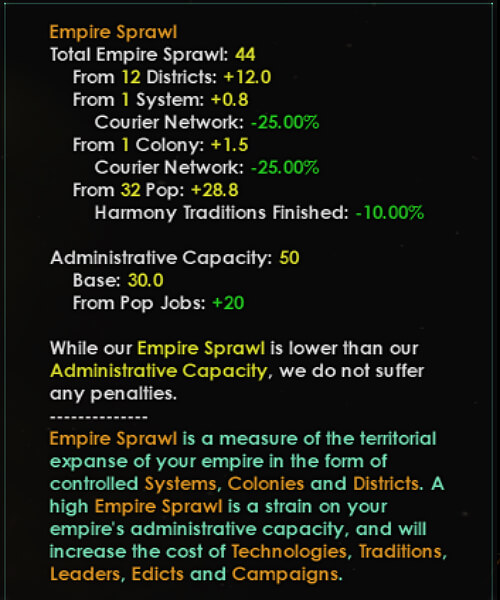
Empire Sprawl can now be modified from its different sources, and as an example, the Courier Networks expansion tradition will now reduce empire sprawl caused directly by the number of planets and systems. As another example shows, the Harmony traditions finisher now reduces the total empire sprawl caused by all your pops.
We are also able to modify how much empire sprawl each pop contributes, and we’ve added a couple of new species traits that affect it. There are also machine variants of these traits.
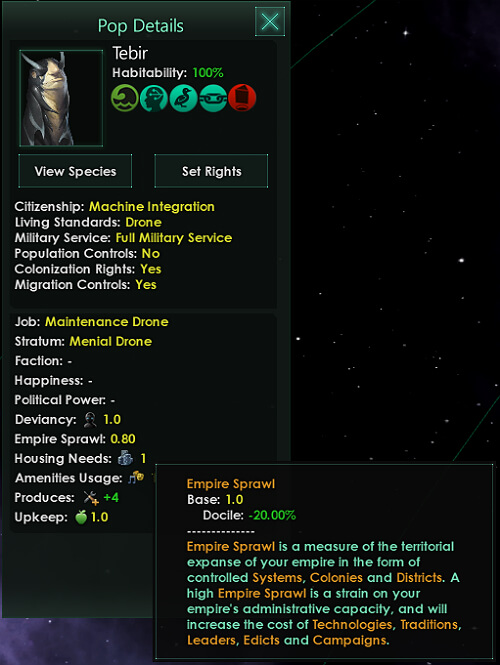
We have also increased the penalty for the amount of empire sprawl that exceeds your administrative capacity. The goal is not to make administrative a hard cap, but we want to make it necessary to invest some of your resources into increasing your administrative capacity. More on that later.
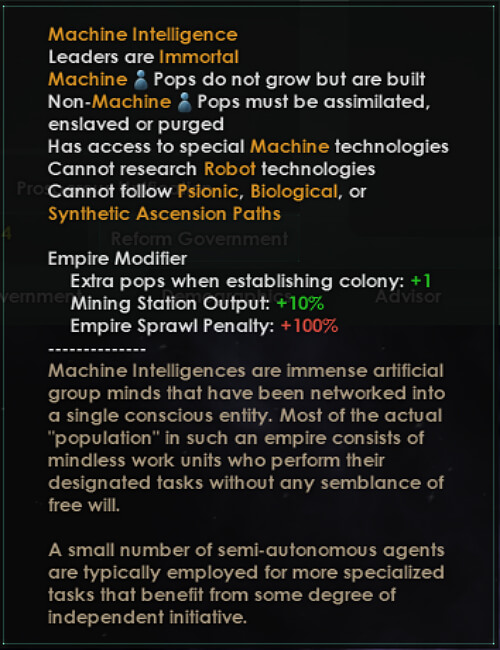
The current plan is for machine empires to be more reliant on keeping their administrative capacity in line with their empire sprawl, so machine empires will suffer a much harsher penalty for exceeding their cap. We want machines to feel “centralized” and to perhaps favor a more “tall” playstyle.

Hive Minds, on the other hand, should be more tolerant of a sprawling empire where unmanaged drones are able to fall back on their instincts whenever they cannot maintain a responsive connection to the hive mind. Therefore, hive minds should be more tolerant of a “wide” playstyle.
Administrative Capacity
With all these changes to empire sprawl, what about administrative capacity, I imagine you asking? Well, since empire sprawl is becoming an expanded concept, administrative capacity will naturally be a part of that. Increasing your administrative capacity will now be a part of planning your empire’s economy.
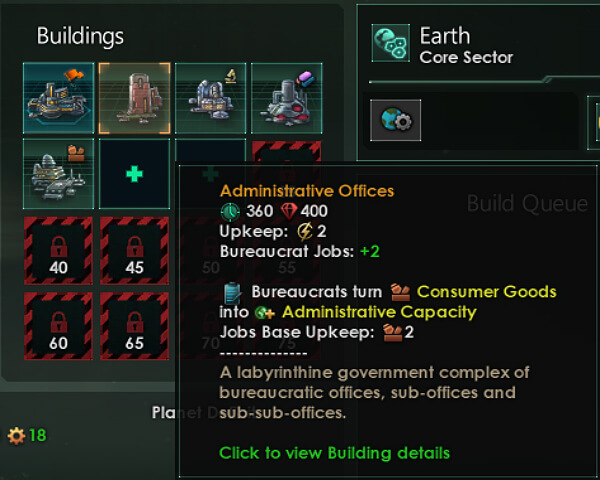
For regular empires, the bureaucrat is a new job that increases your administrative capacity at the cost of consumer goods. This is also a specialist job, and has needs accordingly. Administrators are unchanged, and do not currently affect administrative capacity or bureaucrats.
For machine empires, the coordinators have changed roles from producing unity to now increasing administrative capacity instead, and they are more effective than bureaucrats. A new job called Evaluators now produce unity for machine empires.
Hive Minds currently have the hardest time to produce administrative capacity, but it has been added as a function of the synapse drone job.
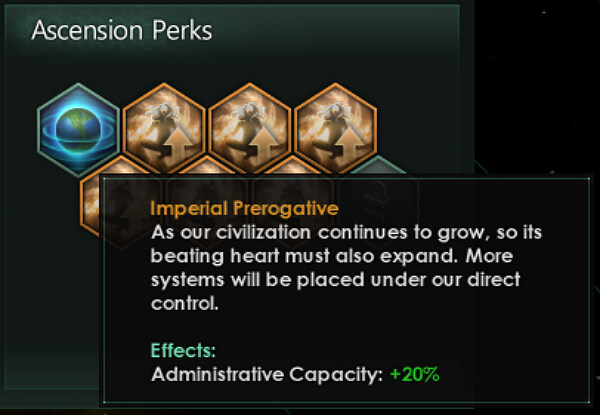
Certain sources that previously increased administrative capacity by a static amount now increase is by a percentage amount instead. This doesn’t affect the output of the jobs, but rather increases the total administrative capacity directly.
Summary
Personally I’m very excited for these changes and I’m very much looking forward to taking it to its next step in the future. I hope you enjoyed reading about the changes that will come to Stellaris sometime later this year. As always, we’ll be interested to hear your thoughts.
As mentioned in last week’s dev diary, the schedule for dev diaries will now be bi-weekly, so the next dev diary will be in another 2 weeks.
Original Link – Continuation of discussion






Add comment